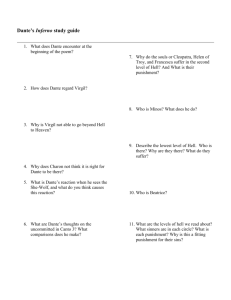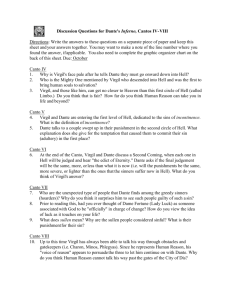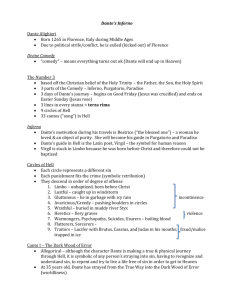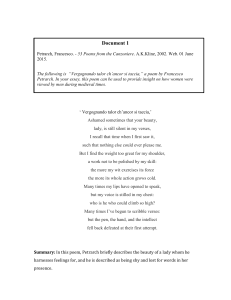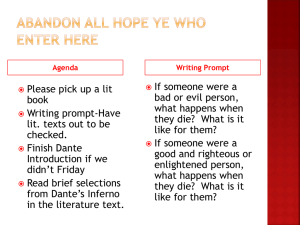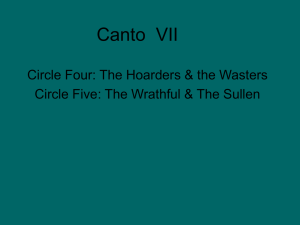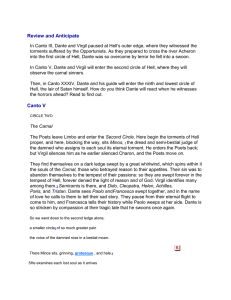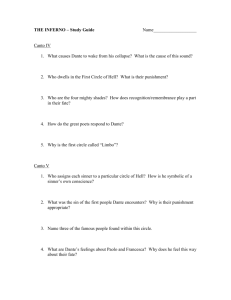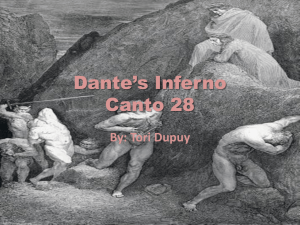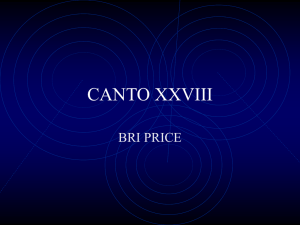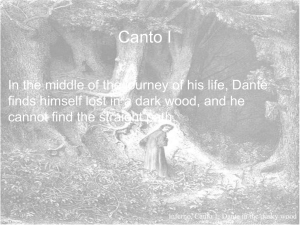Appendix F
advertisement
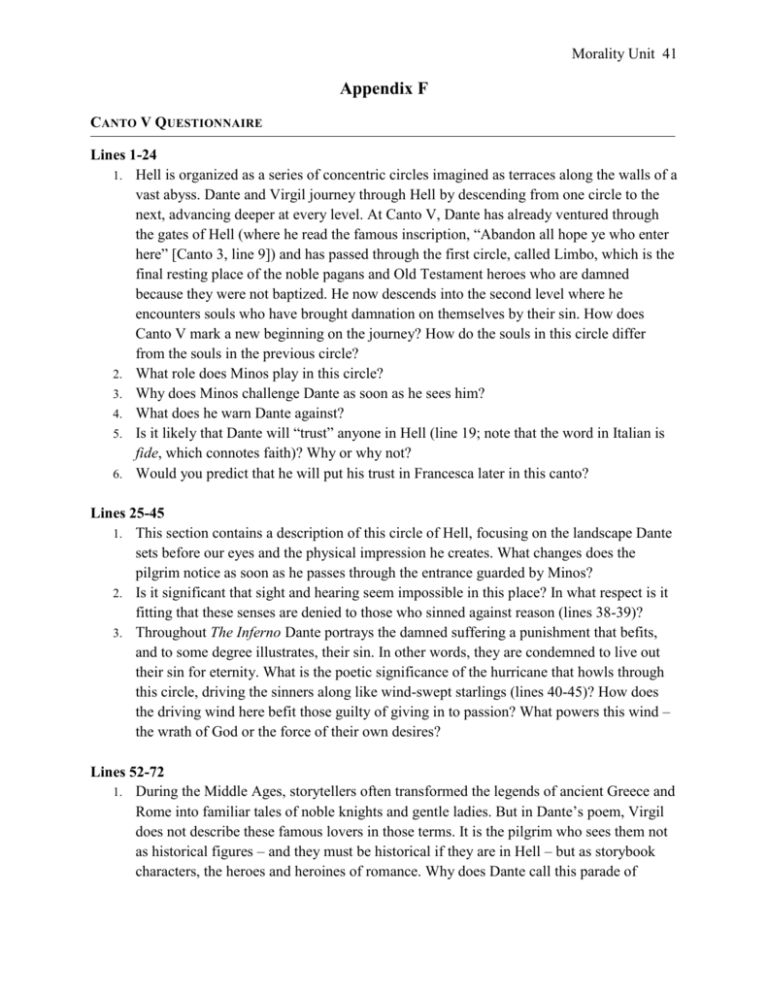
Morality Unit 41 Appendix F CANTO V QUESTIONNAIRE Lines 1-24 1. Hell is organized as a series of concentric circles imagined as terraces along the walls of a vast abyss. Dante and Virgil journey through Hell by descending from one circle to the next, advancing deeper at every level. At Canto V, Dante has already ventured through the gates of Hell (where he read the famous inscription, “Abandon all hope ye who enter here” [Canto 3, line 9]) and has passed through the first circle, called Limbo, which is the final resting place of the noble pagans and Old Testament heroes who are damned because they were not baptized. He now descends into the second level where he encounters souls who have brought damnation on themselves by their sin. How does Canto V mark a new beginning on the journey? How do the souls in this circle differ from the souls in the previous circle? 2. What role does Minos play in this circle? 3. Why does Minos challenge Dante as soon as he sees him? 4. What does he warn Dante against? 5. Is it likely that Dante will “trust” anyone in Hell (line 19; note that the word in Italian is fide, which connotes faith)? Why or why not? 6. Would you predict that he will put his trust in Francesca later in this canto? Lines 25-45 1. This section contains a description of this circle of Hell, focusing on the landscape Dante sets before our eyes and the physical impression he creates. What changes does the pilgrim notice as soon as he passes through the entrance guarded by Minos? 2. Is it significant that sight and hearing seem impossible in this place? In what respect is it fitting that these senses are denied to those who sinned against reason (lines 38-39)? 3. Throughout The Inferno Dante portrays the damned suffering a punishment that befits, and to some degree illustrates, their sin. In other words, they are condemned to live out their sin for eternity. What is the poetic significance of the hurricane that howls through this circle, driving the sinners along like wind-swept starlings (lines 40-45)? How does the driving wind here befit those guilty of giving in to passion? What powers this wind – the wrath of God or the force of their own desires? Lines 52-72 1. During the Middle Ages, storytellers often transformed the legends of ancient Greece and Rome into familiar tales of noble knights and gentle ladies. But in Dante’s poem, Virgil does not describe these famous lovers in those terms. It is the pilgrim who sees them not as historical figures – and they must be historical if they are in Hell – but as storybook characters, the heroes and heroines of romance. Why does Dante call this parade of Morality Unit 42 famous lovers (lines 52-67) “knights” and “ladies,” terms that identify them as characters of medieval romance? 2. How might Dante’s misperception of these sinners be linked to the uncontrollable pity he suddenly feels? 3. Why does he say that this feeling of pity made him “like a man astray?” 4. Is his sympathetic reaction misguided? A letting down of his guard such as Minos warned against? What does this feeling lead to?
